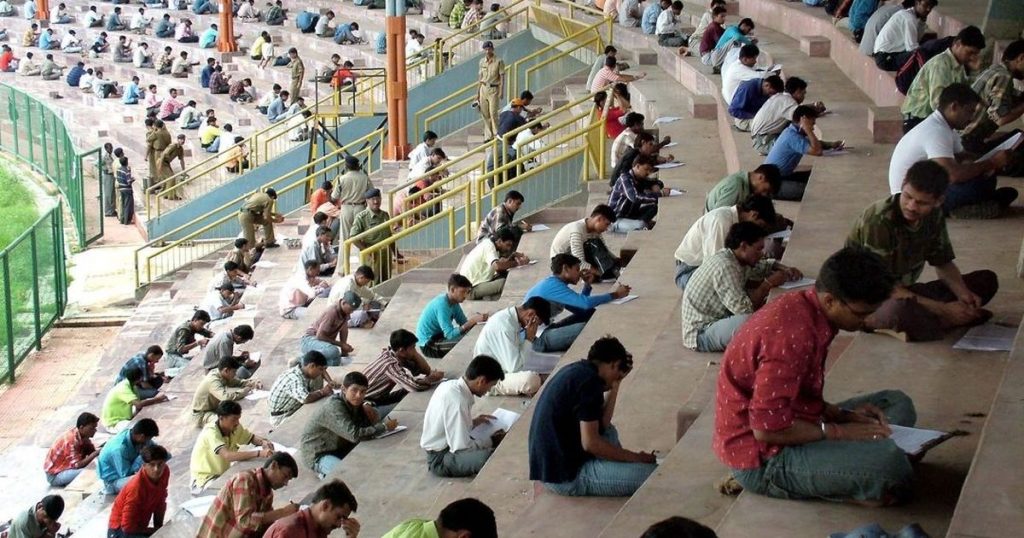The employment situation in India is very serious
About 83% of youth unemployed: International Labor Organization opens the Fortress of Modi’s claims
In the year 2000, the number of educated unemployed youth was 35.2 percent of the total unemployed, which will increase to 65.7 percent in 2022. The report continues.
New Delhi ( Web News )
In India, regardless of the claims and promises of the Hindutva government led by Narendra Modi, the unemployment situation in the country is very serious. According to the Indian newspaper The Hindu, the International Labor Organization (ILO) and the Institute The Employment Report 2024 released by the Institute for Human Development (IHD) shows that around 83% of India’s youth are unemployed and the share of youth with secondary or higher education among the total unemployed youth has increased sharply. According to the report, youth employment and underemployment increased between 2000 and 2019, but declined during the pandemic years. Educated youth have experienced high levels of unemployment in the country during this period. According to this study, the number of educated unemployed among the total unemployed youth in India has also doubled now compared to the year 2000. In the year 2000, the number of educated youth was 35.2% of the total unemployed youth. While in the year 2022, it has increased to 65.7 percent. It includes only the educated youth who have completed at least class 10. The study states that the labor force participation rate (LFPR), proportion of the population of workers ( A long-term decline was observed in unemployment rate (WPR) and unemployment rate (UR) between 2000 and 2018, but an improvement was observed after 2019. The study said that this improvement was due to the period of economic crisis ie. It matches the situation both before and after covid. However, there are exceptions to Corona’s two-pack quarterly. The report’s authors said at the time of its release that this improvement needs to be viewed cautiously because job creation during the recession calls into question these changes. India’s job story has seen some mixed improvement in labor market indicators, where the main long-term feature of the country’s employment situation remains the underdevelopment and capacity of the non-agricultural sector, which absorbs labor from agriculture. . The report said that in various periods before 2018, non-agricultural employment grew faster than agricultural employment. Agricultural laborers are mainly employed in the construction and service sectors. The study also shows that about 90 percent of the laborers are engaged in informal (unorganized sector) work, while the share of formal work, which after 2000 Constantly increased, decreased after 2018. The report states that there are widespread livelihood insecurities in the country, particularly in the non-agricultural, organized sector. Only a small percentage are covered by social security. Worse, contracting practices have increased, with only a small percentage of permanent employees covered by long-term contracts. According to the report, India’s workforce is largely young but has skills. do not have. 75 percent of young people are unable to send an email with an attachment, 60 percent cannot copy and paste files, while 90 percent do not know how to enter mathematical formulas in a spreadsheet. The report also states that employment The lack of quality opportunities is reflected in the high level of unemployment among young people, especially among those with higher education. According to the study, many highly educated young people are unwilling to take the low-paying, insecure jobs currently available. are not willing and would prefer to wait in the hope of finding better employment in the future. With the low participation of women in the labor force, the considerable gender gap in the country’s labor market is also a challenge. The report said that the challenge of unemployment among young women is huge, especially among highly educated women. Highlighting the growing social inequality, the report said that despite affirmative action and targeted policies, Scheduled Castes and Tribals still lag behind in access to better jobs. It said that Scheduled Castes and Scheduled Tribes have a higher share of work due to their economic needs, but they are more engaged in low-wage temporary work and informal employment. Despite improvements in educational attainment between groups, discrimination within social groups persists.

